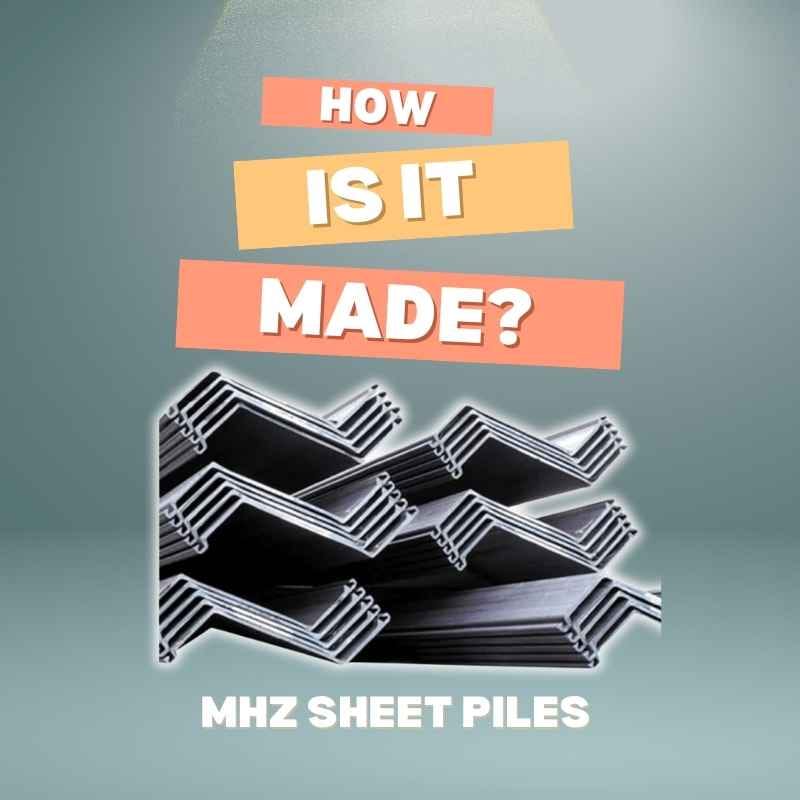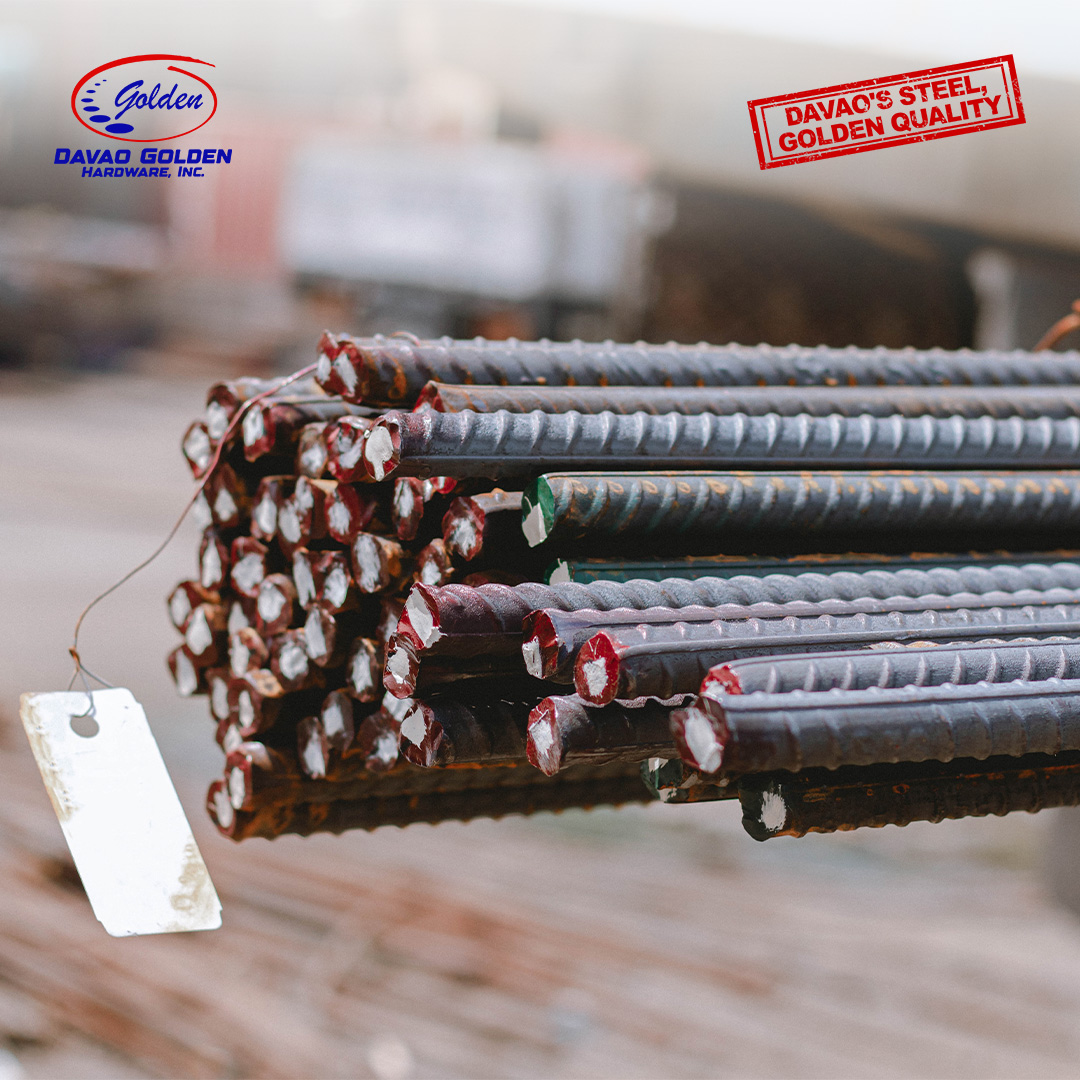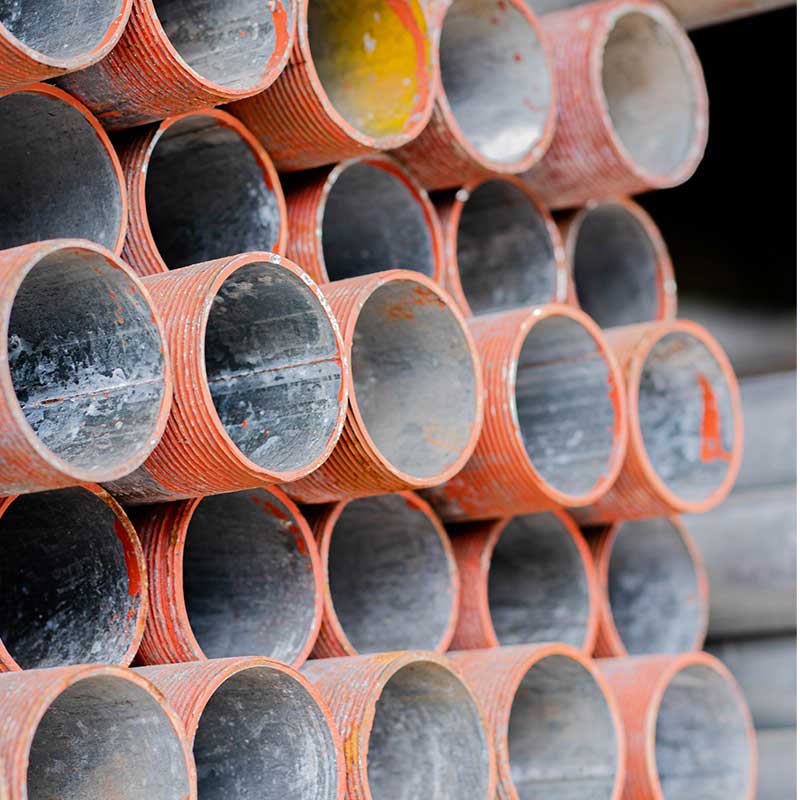
Sheet piling stands as a fundamental component in modern construction, particularly for projects requiring excavation support, water retention, or permanent structural walls. Among the diverse options available in the market, MHZ sheet piles have gained significant popularity due to their exceptional performance characteristics and versatility. This comprehensive guide explores the essential MHZ sheet pile specifications that engineers, contractors, and project managers need to understand for successful implementation.
What Are MHZ Sheet Piles?
MHZ sheet piles represent a specialized category of hot-rolled, Z-shaped steel sections engineered specifically for demanding geotechnical applications. The designation “MHZ” carries significant meaning: “M” identifies the manufacturer’s series, “H” indicates the high-strength steel composition, and “Z” refers to the distinctive profile shape that delivers superior resistance to bending moments.
The Z-shaped profile of MHZ sheet piles provides exceptional section modulus-to-weight ratios, making them highly efficient for resisting bending forces – a critical factor in retaining structures and deep excavations. For detailed product specifications and availability, visit our MHZ Hot-Rolled Z-Type Sheet Piles page.
Key MHZ Sheet Pile Specifications
1. Dimensional Properties
The performance of MHZ sheet pile specifications is largely determined by their precise dimensional characteristics:
- Width: Standard MHZ sections typically range from 600mm to 700mm, providing efficient installation and optimal wall coverage.
- Depth: Profile depths vary between 300mm and 500mm, with deeper sections offering enhanced stiffness for challenging soil conditions.
- Thickness: Wall thicknesses range from 9.5mm to 25.5mm depending on the specific model and application requirements.
- Weight: MHZ piles weigh between 100 and 240 kg/m², striking an ideal balance between structural integrity and material efficiency.
2. Mechanical Properties
Understanding the mechanical properties is crucial when evaluating MHZ sheet pile specifications:
- Section Modulus: Ranges from 1,500 to 4,500 cm³/m, determining the pile’s resistance to bending forces.
- Moment of Inertia: MHZ piles provide values between 25,000 and 140,000 cm⁴/m, indicating superior resistance to deformation.
- Steel Grade: Typically manufactured using S355GP or S430GP steel grades with yield strengths of 355 MPa and 430 MPa respectively.
These mechanical properties follow industry standards as outlined by the American Society of Civil Engineers’ Geotechnical Engineering practices for retaining wall systems and ground support.
3. Interlocking System
The effectiveness of any sheet pile wall depends significantly on its interlocking mechanism:
- Interlock Type: MHZ piles feature an advanced ball-and-socket interlock system ensuring watertight connections.
- Interlock Strength: These connections can withstand tensile forces ranging from 2,500 to 3,800 kN/m, depending on the specific model.
- Interlock Resistance: Optimized design results in low driving resistance, facilitating smoother and more efficient installation.
Applications of MHZ Sheet Piles
The versatility of MHZ sheet pile specifications makes them suitable for numerous applications:
- Waterfront Structures: Harbor walls, quays, and jetties benefit from their high corrosion resistance and structural strength.
- Flood Protection Systems: The watertight interlocking system makes them ideal for flood defense projects.
- Deep Excavation Support: Their high moment capacity allows for substantial excavation depths with minimal bracing requirements.
- Underground Structures: Basement walls, parking structures, and cut-and-cover tunnels frequently utilize MHZ sheet piles.
- Environmental Containment: Their impermeability makes them suitable for contamination barriers and landfill boundaries.
Selection Factors for MHZ Sheet Piles
When specifying MHZ sheet piles for your project, consider these critical factors:
- Soil Conditions: Harder soils may require more robust sheet pile sections or preliminary drilling.
- Groundwater Levels: High water tables necessitate careful consideration of watertightness and potential uplift forces.
- Project Duration: Temporary works may use lighter sections, while permanent structures demand more durable specifications.
- Loading Requirements: Analyze all potential loads, including earth pressure, hydrostatic pressure, and surcharge loads.
- Environmental Exposure: For harsh environments, consider additional protective measures like specialized coatings or cathodic protection systems.
Browse our complete Steel Sheet Piles Product Category to compare different options and find the ideal solution for your project requirements.
Installation Considerations
Successful implementation relies on proper installation techniques:
- Driving Methods: MHZ piles can be installed using impact hammers, vibratory hammers, or hydraulic pressing systems depending on site constraints and environmental considerations.
Driving Sequence: Proper sequencing ensures alignment and minimizes the risk of interlock damage.
Handling and Storage: Appropriate storage and handling procedures prevent damage before installation.
Pre-drilling: For especially dense or rocky soils, pre-drilling may be necessary to facilitate installation and prevent damage to the piles. - Driving Sequence: Proper sequencing ensures alignment and minimizes the risk of interlock damage.
- Handling and Storage: Appropriate storage and handling procedures prevent damage before installation.
For a deeper understanding of installation best practices, the Federal Highway Administration’s Geotechnical Engineering Circular offers valuable resources on earth retention systems and installation methodologies.
Conclusion
MHZ sheet pile specifications provide a comprehensive framework for evaluating and selecting the appropriate solution for challenging geotechnical applications. By understanding the dimensional, mechanical, and performance characteristics of these versatile structural elements, you can ensure optimal design and implementation in your construction projects.
Whether you’re working on waterfront structures, deep excavations, or flood protection systems, selecting the right MHZ sheet pile specification can significantly impact project success, cost-effectiveness, and long-term performance. Consult with experienced geotechnical engineers and suppliers to determine the most suitable MHZ sheet pile configuration for your specific project requirements.




